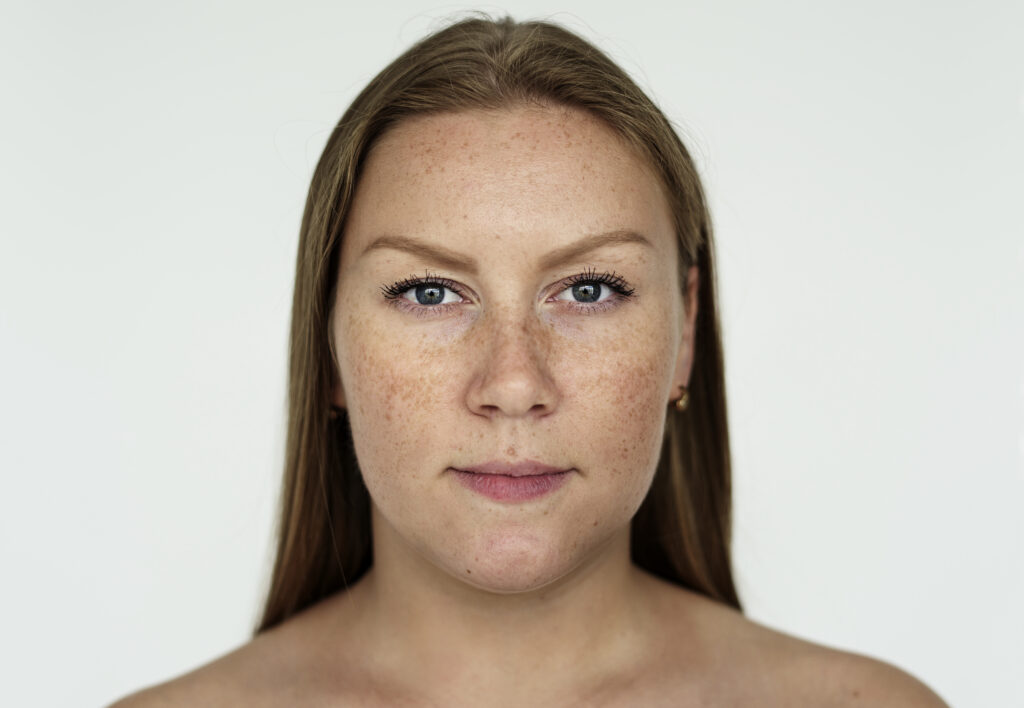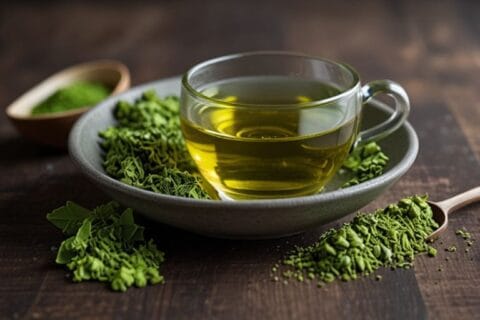Hyperpigmentation is a common skin condition marked by patches of skin becoming darker than the surrounding areas due to an overproduction of melanin. Although many people rely on skincare products to manage dark spots, an often-overlooked approach is targeting hyperpigmentation and diet. Recent research and expert opinions highlight that the foods you consume can play a significant role in skin tone, supporting a more radiant, even complexion. This article will explore how hyperpigmentation and diet are connected, which foods are best for reducing pigmentation, and how lifestyle choices can complement dietary efforts to promote healthier, brighter skin.
What is Hyperpigmentation?
Hyperpigmentation refers to areas of skin that become darker than their surroundings due to excessive melanin, a natural pigment in the skin. Commonly seen on the face, neck, and hands, hyperpigmentation can be a source of frustration for many, especially when traditional creams and treatments offer only temporary relief. Incorporating certain foods and eliminating others can support a natural approach to reducing pigmentation and may even out skin tone over time.
Types of Hyperpigmentation
Understanding the type of hyperpigmentation you’re dealing with can guide both dietary and lifestyle approaches for managing it effectively:

- Melasma: Often associated with hormonal changes, such as pregnancy or birth control use, melasma appears as symmetrical, dark patches on the face.
- Sunspots: Also called age spots, these occur from prolonged sun exposure and frequently show up on areas like the hands, shoulders, and face.
- Post-inflammatory Hyperpigmentation (PIH): This type arises from skin inflammation or injury, such as acne scars or cuts, and can leave dark marks after the healing process.
Primary Causes of Hyperpigmentation
Although hyperpigmentation can result from genetics or aging, several common factors contribute to this skin condition:
- Sun Exposure: UV rays can lead to an increase in melanin production, resulting in sunspots and exacerbating existing dark patches.
- Hormonal Changes: Hormones are a frequent cause of melasma, commonly seen in pregnant women and those taking hormonal treatments.
- Skin Inflammation: Any form of skin trauma, including acne or eczema, can lead to PIH.
- Aging: As we age, skin renewal slows down, which can contribute to persistent dark spots.
While these factors contribute significantly to hyperpigmentation, the role of hyperpigmentation and diet in managing melanin production and inflammation is becoming increasingly clear. The Amazing Schisandra Benefits for Skin to Achieve Youthful Radiance
Connection Between Hyperpigmentation and Diet
The link between hyperpigmentation and diet is rooted in how specific nutrients affect skin health. Certain vitamins, minerals, and antioxidants can help the skin’s natural repair process, regulate melanin production, and reduce inflammation. Consuming a diet high in antioxidant-rich foods, vitamins, and minerals supports skin health from the inside out, offering a holistic approach to managing hyperpigmentation. Meanwhile, diets high in processed foods, sugars, and unhealthy fats may lead to inflammation, which can worsen pigmentation issues.
Nutrients Essential for Reducing Hyperpigmentation
To understand how hyperpigmentation and diet connect, it’s crucial to explore nutrients that directly impact skin brightness and evenness:
1. Vitamin C
Vitamin C is a powerful antioxidant that can help lighten hyperpigmentation by inhibiting tyrosinase, an enzyme essential for melanin production. Regular intake of Vitamin C-rich foods can brighten the skin and improve its overall tone.
2. Vitamin E
Vitamin E works alongside Vitamin C to protect skin cells from oxidative damage. This nutrient helps maintain skin elasticity, moisture, and evenness, making it ideal for addressing hyperpigmentation.
3. Zinc
Zinc is essential for skin repair and can help manage inflammation, making it beneficial for post-inflammatory hyperpigmentation. It also plays a role in regulating oil production, which can reduce acne-related pigmentation issues.
4. Selenium
Selenium is another antioxidant that protects skin cells from damage, especially from UV rays. It aids in cell regeneration, which can reduce the appearance of dark spots.
5. Omega-3 Fatty Acids
Omega-3 fatty acids, found in foods like fatty fish, help reduce inflammation and improve skin’s resilience, indirectly supporting a more even tone.


Top Foods to Include for Brighter, Even Skin
A diet rich in specific foods can have a noticeable effect on hyperpigmentation. Here are the top foods to incorporate:
Antioxidant-rich Fruits and Vegetables
- Berries (blueberries, strawberries, blackberries): High in antioxidants, berries help neutralize free radicals that can damage skin cells.
- Citrus Fruits (oranges, lemons, grapefruits): These are rich in Vitamin C, which supports collagen production and brightens the skin.
- Leafy Greens (spinach, kale, Swiss chard): Packed with Vitamins A, C, and E, leafy greens promote skin health and repair.

Nuts and Seeds
- Almonds: Rich in Vitamin E, almonds help keep skin hydrated and reduce the appearance of dark spots.
- Pumpkin Seeds: High in zinc, pumpkin seeds aid in skin healing and can help manage post-inflammatory hyperpigmentation.
Fatty Fish
- Salmon, Sardines, and Mackerel: These fish are rich in Omega-3 fatty acids, which help reduce inflammation and promote an even skin tone.
Green Tea
Green tea contains polyphenols with anti-inflammatory and antioxidant properties that may reduce melanin production, thus helping with hyperpigmentation.
Whole Grains
Whole grains like oats, quinoa, and brown rice are high in B vitamins, which aid in skin regeneration and may prevent discoloration from inflammation.


Foods to Avoid for Optimal Skin Tone
Certain foods can aggravate hyperpigmentation by causing inflammation or slowing skin healing. Avoiding these foods can help reduce dark spots and support brighter skin:
- Sugary Foods: High sugar intake can spike insulin levels, which can lead to inflammation and worsen acne-related pigmentation.
- Processed Foods: Foods high in trans fats and preservatives can promote inflammation, slowing down skin’s ability to heal and repair.
- Alcohol: Alcohol can dehydrate skin, making pigmentation issues more visible and potentially prolonging their appearance.
By minimizing these foods, you can better support a diet aimed at reducing hyperpigmentation. Why You Should Drink this Tea Daily: 10 Amazing Benefits of Ginger and Mint Tea
Hydration’s Role in Reducing Pigmentation
Adequate hydration is crucial for maintaining skin elasticity, cell regeneration, and an overall healthy appearance. Dehydrated skin can look dull and make hyperpigmentation more noticeable. Drinking 8-10 glasses of water per day, along with consuming hydrating foods like cucumber and watermelon, can keep your skin plump and aid in achieving an even tone.
Lifestyle Tips for Hyperpigmentation Management
In addition to hyperpigmentation and diet, incorporating lifestyle habits that support skin health can enhance results. Here are some tips:
- Sun Protection: Use a broad-spectrum sunscreen with SPF 30 or higher, as UV rays can worsen pigmentation.
- Adequate Sleep: Aim for 7-8 hours of sleep per night, as this allows the skin to repair itself.
- Gentle Skincare Routine: Avoid harsh products that can irritate the skin, especially if you’re prone to hyperpigmentation.
Together with a skin-friendly diet, these practices can help reduce pigmentation and maintain a healthy, radiant complexion.


How Long to See Results from Diet Changes?
Changing your diet to support skin health and reduce hyperpigmentation requires patience. Skin cells regenerate approximately every 28 days, so it may take one to three months to notice visible improvements. Consistency in following a balanced, nutrient-rich diet and avoiding trigger foods will yield the best long-term results.
The relationship between hyperpigmentation and diet is a powerful one. By including foods rich in antioxidants, vitamins, and minerals, you can help your skin naturally repair and protect itself from damage. Foods like berries, leafy greens, and fatty fish can all play a role in reducing pigmentation, while avoiding inflammatory foods supports skin’s natural healing process. While dietary changes alone may not be a quick fix, they lay a strong foundation for brighter, more even-toned skin over time.
FAQs
1. Can diet alone completely eliminate hyperpigmentation?
Diet can significantly improve skin health and reduce hyperpigmentation, but it may not completely eliminate it. Combining dietary changes with skincare and sun protection often yields the best results.
2. How quickly can I expect results from a diet focused on hyperpigmentation?
It typically takes 1-3 months to see noticeable changes as skin cells regenerate. Consistency with diet and lifestyle choices is essential for long-term improvement.
3. Are supplements effective for reducing hyperpigmentation?
Supplements such as Vitamin C, Vitamin E, and zinc can support skin health but should complement, not replace, a balanced diet. Be sure to check with a healthcare provider before beginning any new supplements.
4. Can drinking more water help reduce hyperpigmentation?
Staying hydrated can improve skin’s texture and elasticity, making pigmentation less noticeable, though water alone may not directly reduce pigmentation.
5. What are quick and easy snacks to support a diet for hyperpigmentation?
Nuts (like almonds), seeds (like pumpkin seeds), and fresh fruits (like berries and oranges) are easy, skin-friendly snacks that provide essential nutrients for brighter skin.
In conclusion, the link between hyperpigmentation and diet offers a natural way to support healthier, more even-toned skin.
















